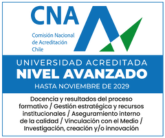Kofi Osei-Bonsu(a), Paul Grassia(b, c), Nima Shokri(a).
(a) School of Chemical Engineering and Analytical Science, University of Manchester, Manchester, UK.
(b) Department of Chemical and Process Engineering, University of Strathclyde, Glasgow, UK.
(c) Departamento de Ciencias Matemáticas y Físicas, Universidad Católica de Temuco, Temuco, Chile.
JOURNAL OF COLLOID AND INTERFACE SCIENCE
Volumen: 490 Páginas: 850-858
DOI: https://doi.org/10.1016/j.jcis.2016.12.015
Fecha de Publicación: 15 de Marzo de 2017.
Abstract
Foams demonstrate great potential for displacing fluids in porous media which is applicable to a variety of subsurface operations such as the enhanced oil recovery and soil remediation. The application of foam in these processes is due to its unique ability to reduce gas mobility by increasing its effective viscosity and to divert gas to un-swept low permeability zones in porous media. The presence of oil in porous media is detrimental to the stability of foams which can influence its success as a displacing fluid. In the present work, we have conducted a systematic series of experiments using a well-characterised porous medium manufactured by 3D printing technique to evaluate the influence of oil on the dynamics of foam displacement under different boundary conditions. The effects of the type of oil, foam quality and foam flow rate were investigated. Our results reveal that generation of stable foam is delayed in the presence of light oil in the porous medium compared to heavy oil. Additionally, it was observed that the dynamics of oil entrapment was dictated by the stability of foam in the presence of oil. Furthermore, foams with high gas fraction appeared to be less stable in the presence of oil lowering its recovery efficiency. Pore-scale inspection of foam-oil dynamics during displacement revealed formation of a less stable front as the foam quality increased, leading to less oil recovery. This study extends the physical understanding of oil displacement by foam in porous media and provides new physical insights regarding the parameters influencing this process.



